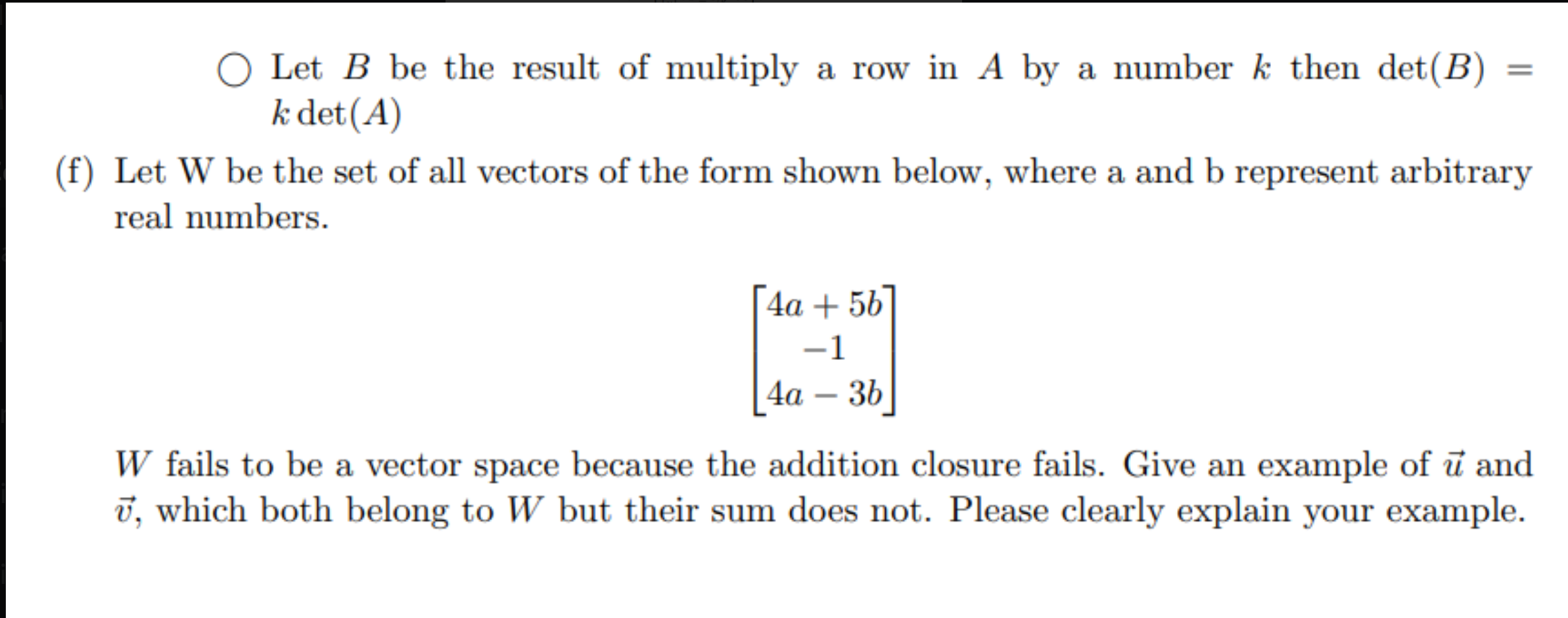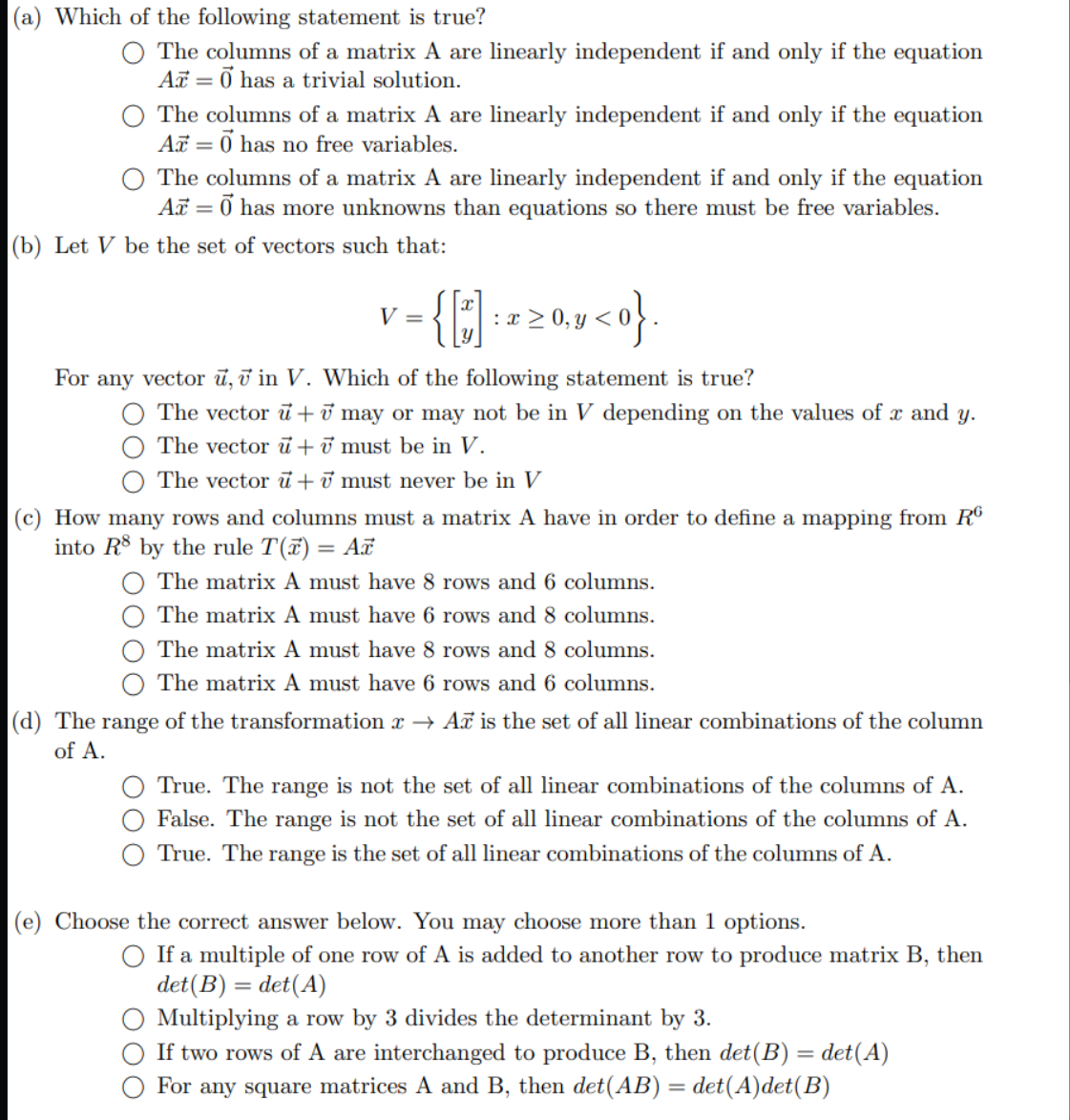please help with these
0 Let B be the result of multiply a row in A by a number k then det(B) = kdet(A) (f) Let W be the set of all vectors of the form shown below, where a and b represent arbitrary real numbers. 4a + 5b 1 4a 3b W fails to be a vector space because the addition closure fails. Give an example of ii and 17, which both belong to W but their sum does not. Please clearly explain your example. (a) Which of the following statement is true? 0 The columns of a matrix A are linearly independent if and only if the equation A5 = (T has a trivial solution. C) The columns of a matrix A are linearly independent if and only if the equation A5 = 0 has no free variables. 0 The columns of a matrix A are linearly independent if and only if the equation A5 = (T has more unknowns than equations so there must be free variables. (b) Let V be the set of vectors such that: .-{[;]-.....}_ For any vector II, if in V. Which of the following statement is true? 0 The vector 11' + 17 may or may not be in V depending on the values of a: and y. C) The vector {5+ 1?th be in V. O The vector {i + 13' must never be in V (c) How many rows and columns must a matrix A have in order to dene a mapping from R6 into R8 by the rule T(:E') = Air' 0 The matrix A must have 8 rows and 6 columns. 0 The matrix A must have 6 rows and 8 colunms. O The matrix A must have 8 rows and 8 coiulnns. O The matrix A must have 6 rows and 6 columns. (d) The range of the transformation .1: > A135 is the set of all linear combinations of the column of A. 0 True. The range is not the set of all linear combinations of the columns of A. 0 False. The range is not the set of all linear combinations of the columns of A. 0 True. The range is the set of all linear combinations of the columns of A. (3) Choose the correct answer below. You may choose more than 1 options. 0 If a multiple of one row of A is added to another row to produce matrix B, then det(B) = det(A) O Multiplying a row by 3 divides the determinant by 3. 0 If two rows of A are interchanged to produce B, then det(B) = det(A) O For any square matrices A and B, then det(AB) = det(A)det(B)








